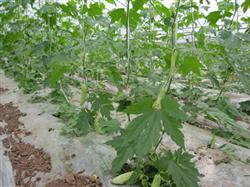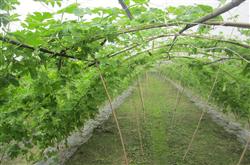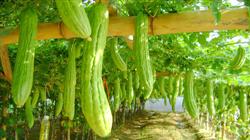What should we pay attention to when planting balsam pear in June?

What should we pay attention to when planting balsam pear in June? Please guide the cultivation of balsam pear in June to pay attention to the following points: pruning: since many grafted balsam pear seedlings are still transplanted from the end of May to mid-June, this part of balsam pear seedlings will have to strengthen pruning work in June and July. Balsam pear has a strong branching, and lateral vines may occur in almost every leaf. In order to create a well-ventilated and transparent growth environment and reduce nutrient consumption, lateral branches, buds and tendrils less than 1 meter should be removed, especially buds and tendrils consume a lot of nutrients, so they should be removed at the beginning, and the sooner they are removed, the better. Diseases, melons and flies: 1000 times of 50% dichlorvos EC and 3000 times of 2.5% deltamethrin. Mites: use 36% Ke mite fly EC 1000-1500 times, 5% carotene EC 2000 times, 1.5% Abudine EC 3000 times. Fusarium wilt: root irrigation with 25% clenbuterol or 50% carbendazim powder. If a diseased plant is found, it should be removed and burned immediately. Powdery mildew: during the flowering and fruiting period, the leaves are covered with white powdery matter, which makes the leaves lose green and yellowing, resulting in premature senescence of the plant. Prevention and control methods: when there is a white powder on the leaves, the aqueous solution of cyanobactazole, trimethoprim, or sulfur suspending agent should be sprayed on the leaf surface every 7-10 days for prevention and control, and be sprayed continuously for 2-3 times. pay attention to the amount of water must be large. Epidemic disease: on the leaves, it starts from the leaf tip or leaf edge, the shape of the disease spot is irregular, the periphery is not obvious, the initial dark green, water stains, and then turn brown. The disease spot can expand to the whole or more than half of the leaves, and when it is wet, a circle of white mildew grows at the junction of the disease spot. Control agents: chlorothalonil, Bengke, Bordeaux solution, Nongliling, Anke, Sixian morpholine, ethyl phosphate aluminum, disinfectant alum or Jinreidi spray, diseased leaves removed and taken away for destruction. Click to get more balsam pear planting techniques click to get more vegetable planting techniques
- Prev

How to manage high temperature balsam pear in summer?
How to manage high temperature balsam pear in summer? Please introduce the management method of balsam pear root system like wetting, avoid stagnant water, usually should pay attention to dig drainage ditch, in case of rainstorm, should timely eliminate stagnant water in the field. The use of water can be carried out according to the dry and wet condition of the soil. In general, the sun is strong in sunny days, the evaporation is large, and the moisture disappears quickly.
- Next

How to plant pollution-free balsam pear?
How to plant pollution-free balsam pear? Please introduce planting methods for pollution-free balsam pear cultivation can refer to the following methods: variety selection should choose varieties with short vines, short internodes, small leaves, strong stress resistance, early maturity, high yield and storage tolerance, such as Huadu green balsam pear, which has strong plant growth. Strong disease resistance, starting from the third leaf.
Related
- Where is it suitable to grow horseradish in China? it is expected to see the middle altitude horseradish in Alishan.
- How to prevent tomato virus disease reasonably? (Control methods included)
- Many people like to plant towel gourd on the balcony. What are the main points of this method and management?
- What crops can chili peppers be mixed with?
- Fertilization techniques and matters needing attention in Tomato
- What are the grafting techniques for peach seedlings in spring?
- Harm and control methods of root swelling disease of Chinese cabbage
- What are the pests of sweet potatoes? How to prevent and cure it?
- Symptoms, causes and Control methods of navel Rot in Tomato
- The cause of "Cucumber rotten bibcock" in Farmers' planting Cucumber and its Control Plan

